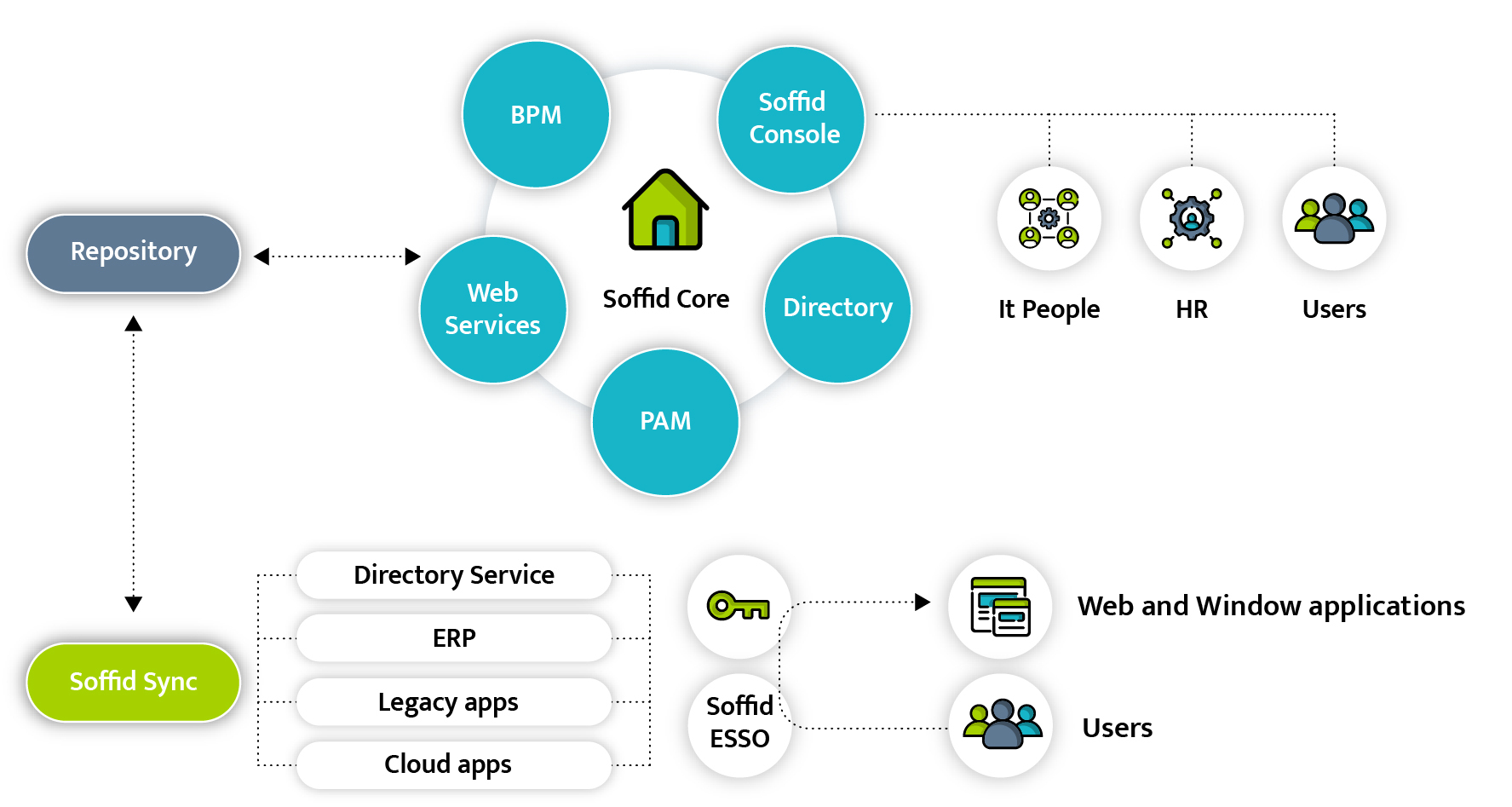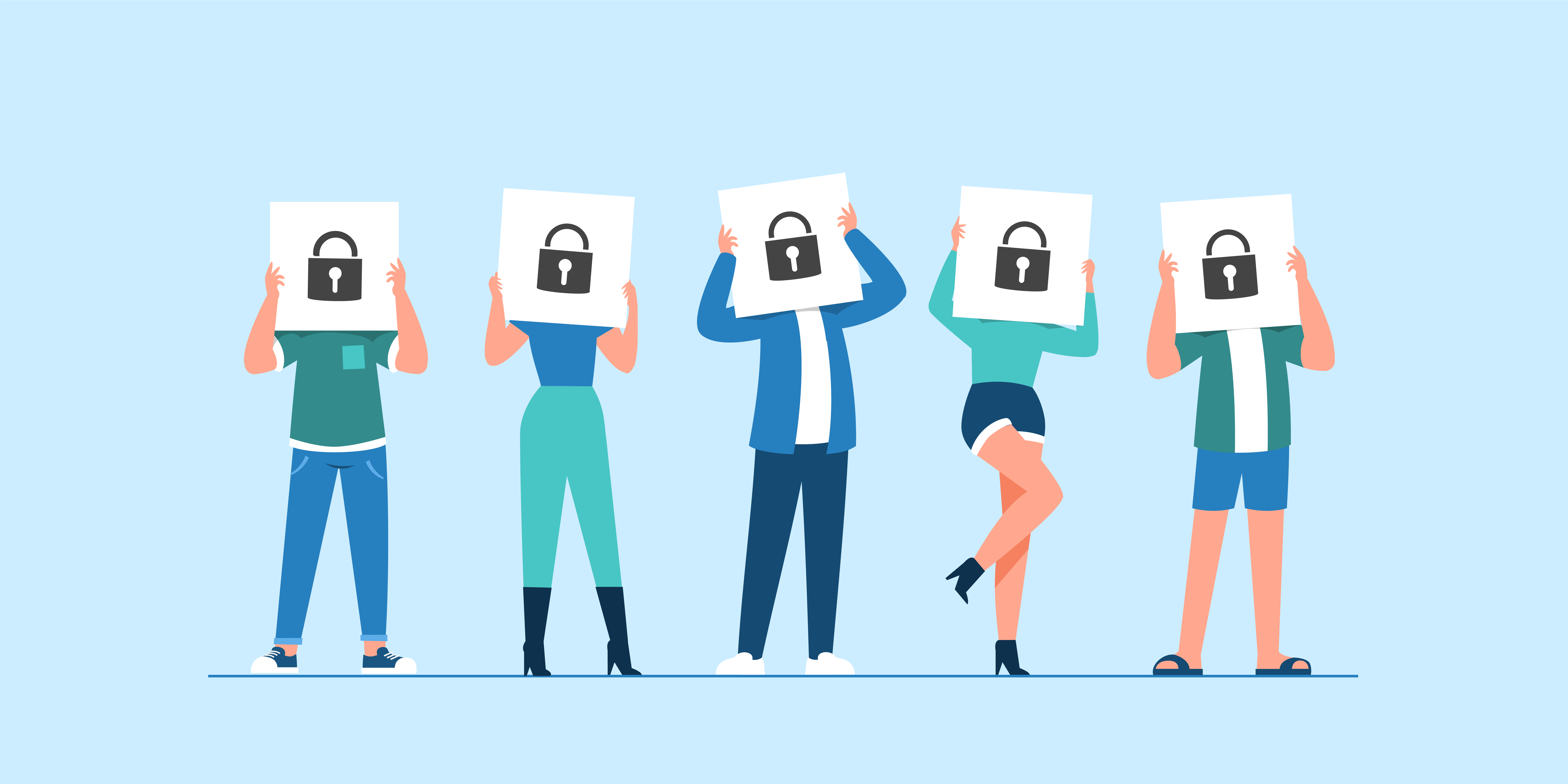
by Rebeca | Oct 14, 2021 | cybersecurity, Definitions, News, Resources, soffid
Cyber security has always been an unsought goods like, insurance, which is useful only when something bad happens. And It’s always been challenging for security leaders to communicate the value of cybersecurity investments to board and peers. Furthermore, everyone in an organization has their own perspective when it comes to cyber security. That’s partly why security professionals find it difficult to convince management for budget approval.
The value of cybersecurity should be crystal clear to life sciences and health care boards and leadership. Cybersecurity attacks and data breaches seem to be in the headlines almost daily, and sobering statistics are everywhere.
Security leaders are faced with placing a value on things that haven’t even happened, like data breaches, service disruptions and loss of customers. They need to justify security investment and acquire budget to protect organizations from the growing list of threats that could impact the future of the business.
Then there’s the problem of speaking a different language. Cybersecurity metrics are often communicated in complex, technical language that is difficult for the CEO or other business functions to understand. But translating cyber risk into business risk has never been more important, as many organizations face significant budget cuts amid COVID-19.
A comprehensive cybersecurity program is a business-critical function. With three tips, CIOs and CISOs can better communicate cybersecurity ROI by stressing why these programs are a must-have for their organizations, demonstrating the business value of security solutions and building a strong security culture.
Cybersecurity should not be treated as a siloed department, but rather an integrated part of overall business functions. One way to communicate the far-reaching value of a cybersecurity strategy is to walk leadership through the consequences of a data breach — loss of customers, data, revenue, intellectual property and more — as these consequences directly affect a business’s bottom line. By connecting the dots for non-IT executives, they’ll be able to better acknowledge the importance of strong security practices.
Create a Positive Security Culture
Engaging the whole organization to help them understand the value of a cybersecurity program is not easy. Technical risks are often difficult to translate across departments. Meanwhile, policies and procedures that ensure good security habits can be seen as an impediment to employee productivity.
This is why a positive security culture is so important. By using techniques like gamification, positive reinforcement, or interactive content like videos and podcasts to promote security practices, CISOs can engage fellow employees and get more buy-in from executives. These strategies help everyone, regardless of department or level of seniority, understand the risks and responsibilities regarding security and how each employee plays a crucial role.
One major benefit of a positive security culture is that it creates in-house evangelists who can demonstrate the value of cybersecurity. It will also empower security-aware employees to become the organization’s greatest cybersecurity asset. Simple human error causes the majority of security breaches. Getting employees invested in security contributes to overall data protection and cybersecurity objectives.
Ultimately, communicating the value of cybersecurity depends on translating cyber risk into business risk, and making security a guiding principle for your larger organization. With risks and challenges related to remote working becoming the new normal for many organizations, it’s critical that IT leaders engage all employees in shared cybersecurity awareness.
Situations are changing, as boards and management are understanding the importance of security. Now it’s the security leader’s responsibility to communicate the importance of cyber security effectively. This has become very important during the pandemic when huge risks of cyber breaches are looming and organizations cut costs due to slowing business to survive the pandemic.
Communicating the value (and necessity) of cybersecurity measures to your larger organization isn’t easy. Not only are technical risks hard to translate across departments, but policies and procedures can often be seen as a hindrance to employee productivity.
But, if you can engage with the larger organization and create a positive security culture, you’ll have a better chance of getting buy-in from C-level executives. How?
More and more, CISOs are relying on gamification, positive reinforcement, and interactive content like videos and podcasts to promote their strategies. Whatever the method or medium, the most important thing is that risks and responsibilities – which the entire organization bears the burden of – are communicated so that everyone, regardless of department or level of seniority, can understand.
The benefits of this are two-fold. Not only will you demonstrate the value of cybersecurity via in-house evangelists, but you’ll also empower security-aware employees to become your biggest cybersecurity asset.
Resources:
(1) Gartner
(2) KPMG
(3) security Tech
Picture: <a href=’https://www.freepik.es/fotos/icono’>Foto de Icono creado por 8photo – www.freepik.es</a>

by Rebeca | Oct 13, 2021 | cybersecurity, soffid
The COVID pandemic has disrupted many industries and has fueled the growth of others. According to the Flexera 2021 State of the Cloud report, 90% of companies surveyed are increasing their cloud usage due to the pandemic and the resultant digital shift.
Updated infrastructure
Over the last few years, the number of cyberattacks has increased because hackers have access to better tools and are more tech-savvy than the average employee.
To some extent, this increase in data breaches is also due to the organization’s outdated infrastructure. From an organization’s standpoint, it’s too expensive and infeasible to upgrade their network infrastructure once every few years to make it more secure. This is often seen as one of the biggest reasons for the growing increase in hacking incidents.
Meets compliance
Compliance with statutory regulations and standards is one of the biggest challenges today. In addition to meeting security standards, organizations have to meet stringent laws related to data privacy, ensure transparent data practices, and allow users to stay on top of how their data is used.
Organizations find it increasingly hard to meet these stringent compliance regulations with their in-house IAM solutions. Soffid, on the other hand, helps organizations to comply with these regulations through its features. Our intelligent analytics continuously monitor for and identify new access risks while providing native connectors with GRC solutions so risk managers can create holistic enterprise risk management strategies.
Easy to use
Soffid is not just for security. A simple and quick registration process on customer-facing applications will boost the conversion rates for organizations as more customers would be forthcoming to the idea of a secure login to access the organization’s services. Further, a single sign-on across all the organization’s resources is sure to add to a user’s convenience.
Custom solutions
We can customize our platform to meet an organization’s specific requirements as it supports different identity managements. Further, it can be designed separately for employees and external customers or as a unified IAM solution, depending on the organization’s needs.
Ease of use
Your customers and employees must find it easy to use Soffid solution. This usability is critical for adoption and to reduce the number of helpdesk calls and the resultant workload on your IT team. Consider your employees’ and customers’ demographics while deciding on an identity solution and aim to enhance the overall user experience. Consider your future prospects and their demographics as well.
Meets your compliance standards
Every industry has to adhere to a specific set of compliance standards, so make sure you know what these standards are and how Soffid can comply with them. Thus, these are some of the factors to consider.
Why IDaas has become a pandemic tool
It offers many benefits such as better security, a good user experience, compliance with industry standards, and more.
Shall we talk?
Sources:
(1) Security Itelligence
(2) CSO Online
(3) techgenix

by Rebeca | Oct 6, 2021 | cybersecurity, soffid
Pre-COVID-19, private and public organizations were on a journey towards a digital business model, travelling at varying speeds. But the scale of the pandemic has forced a dramatic acceleration, both in the speed of change and the required investment in digital transformation.
According to KPMG’s 2020 global survey, organizations are investing heavily in technology to address immediate concerns like falling revenue and interrupted supply chains, and to build longer-term competitiveness and resilience.
t’s a struggle to find many positives about the current coronavirus pandemic, however there are a few interesting aspects that are starting to emerge. Trends that may well bring significant positive benefits as their full impact is felt in the months and years to come. One of these is the likely acceleration of digital transformation projects.
Cyber security and IT operational challenges, cost pressures, risk aversion and the skills gap are all driving the digital transformation agenda. On the plus side, benefits such as innovation and improvement of products and services, efficiency and an uptick in organizational agility are all expected outcomes.
Why Will COVID-19 Accelerate The Pace Of Change?
As vast swathes of the workforce shift to remote working and pressure increases to enable digital delivery of products and services traditionally rooted outside the online space, the pressure to be a truly digital organization will only increase. Organizations of all shapes and sizes will face renewed commercial pressure to negate the downsides through digital transformation and realize the benefits it offers in order to remain viable.
We are in a time where COVID-19 has transformed the future of business forever. Organizations from all sectors globally have been focusing on transforming digitally to ensure that the needs of their organization, customers, citizens, patients, and greater stakeholder community are met. The move from physical and on-premises to digital was critical to ensure organizations’ survival through COVID-19, as well as setting an example for potential challenges that may occur in the future.
There are very few industries unimpacted by the COVID-19 pandemic. However, retail is an industry that has seen Digital Transformation skyrocket. With the breakneck pace of change required for retailers to compete for business online further compounded by the influx of bricks-and-mortar businesses to e-commerce due to global restrictions and lockdowns, full-scale Digital Transformation very quickly became inevitable.
All this is to say that the conversations in business have shifted rapidly over the past year to a unanimous understanding that digitization of services in addition to industry disruption due to rapid advancements in the technologies available to businesses are now changing the shape of commerce forever. Businesses that want to keep up, or survive in reality, will need to transform radically – not just digitally, but in mindset too.
A McKinsey report argues that “Now is the time to reassess digital initiatives”. The current pandemic is forcing the hand of many to adapt to survive. Never has the phrase, ‘necessity is the mother of invention’ been more relatable.
Over the last few months, the way we interact with services has changed. Many of us are now fully ‘remote’—not only are we working from home, but also learning, shopping, exercising, and other day to day activities.
We’ve all had to adjust. But for companies in particular, it’s raising questions about how to maintain business continuity. Unable to conduct business as normal, many have turned to alternative solutions and business models. Restaurants have started providing food deliveries, gyms are offering virtual classes and even hairdressers are offering tutorials online to help people cut their own hair.
These alternative solutions will likely require some form of digital innovation or optimization. In some cases, it’s fast-forwarding digitization processes that businesses were already exploring, and in others, it’s bringing to light new ones which hadn’t been considered.
What does this mean for a post-Covid world?
With many businesses turning to alternative digital solutions now more than ever before, will there be no going back once the Covid pandemic has passed?
If digital solutions are more convenient, offer a better user experience, and are more scalable for businesses, why would we then revert to time-consuming, inefficient manual or face to face processes? Are we seeing a glimpse into the future, where digital processes dramatically improve the way businesses function, and the way they serve customers?
We’re familiar with new tech start-ups, for example challenger banks, using digital processes to their advantage. But we may see more digital processes taken up by traditional services, such as mainstream banks, hotel check-ins, voting and car rentals.
One thing to keep in mind with digital transformation however, is that as it develops, we risk widening the gap between those who turn to digital options and those who don’t. Not only could this impact businesses, but we must also consider customers who might find it more difficult to use digital alternatives, for example older generations.
However, if done right, digital transformation could help secure the future of many companies. The pandemic has highlighted the fact that businesses around the world need to become more flexible and more digital. And that through doing so, it could ensure that they emerge from the Covid pandemic stronger than they were beforehand.
Sources:
(1) KPMG
(2) Deloitte
(3) CioInsight
Picture: <a href=’https://www.freepik.es/fotos/icono’>Foto de Icono creado por rawpixel.com – www.freepik.es</a>

by Rebeca | Sep 29, 2021 | cybersecurity, soffid
Nowadays security issues are a prime concern because most identity methods are not so effective. The more technology is improving, the more new threats are coming and IAM is needed to significantly mitigate them. Due to the amount of information which is stored, used and transmitted, companies must define certain restrictions regarding who is allowed to access data. Providing a secure access is a serious challenge to IT professionals who must simultaneously meet the needs of different users across numerous, disparate applications.
Meeting these demands across a variety of on-premises and cloud applications requires the use of agile identity and access management solutions. Effective IAM solutions help enterprises provide secure and efficient access to technology resources across diverse systems. They also deliver a number of significant benefits which is a good reason to implement Identity and Access Management Solution in your business.
Identity and access management (IAM) helps you securely control who has access to your systems, applications, and data within your organization, as well as where they can go within those systems.
With proper IAM solutions in place, organizations will be able to define who has what level of access. This shrinks the attack surface and prevents data leaks because user privileges are closely moderated.
What Is IAM?
Identity and access management encompasses a lot, but at its core IAM is about identity. IAM is set of policies, procedures, and protocols used to secure access to computing resources. Its primary purposes are security, compliance, and business continuity.
IAM is set of policies, procedures, and protocols used to secure access to computing resources.
The identity part of IAM is the methods by which an organization can verify that an individual is who they say they are. The access part of IAM refers to the process of determining how each individual should be allowed to access specific information, hardware, or software tools within an organization’s infrastructure.
The purpose of IAM is to provide access control to IT resources by managing user accounts, devices, applications, files, services, systems, and networks. In doing so, an organization can ensure that all business data is secure. IT can also create data policies that prevent data loss or theft.
Components of Identity and Access Management
But before we get too far ahead of ourselves, let’s break down exactly what identity and access management entails. There are four basic components:
- User provisioning
- Privileged Access Management (PAM)
- Account security
- Integration
An enterprise should have at least three to five goals when choosing an IAM solution — and again, these will depend on your unique needs. A good way to tell if your system is outmoded or inefficient is by monitoring login success rates. Ideally, your success rate should be above 95%. If it’s hovering around 75% or less, then something is wrong!
Main Benefits of Identity and Access Management
Improved security
IAM solutions help identify and mitigate security risks. You can use IAM to identify policy violations or remove inappropriate access privileges, without having to search through multiple distributed systems. You can also leverage IAM to ensure that security measures are in place to meet regulatory and audit requirements.
Information sharing
IAM provides a common platform for access and identity management information. You can apply the same security policies across all the operating platforms and devices used by the organization. IAM frameworks can help you enforce policies related to user authentication, privileges, and validation, and attend to “privilege creep”.
Ease of use
IAM simplifies signup, sign-in and user management processes for application owners, end-users and system administrators. IAM makes it simple to provide and manage access, and this promotes user satisfaction.
Productivity gains
IAM centralizes and automates the identity and access management lifecycle, creating automated workflows for scenarios like a new hire or a role transition. This can improve processing time for access and identity changes and reduce errors.
Reduced IT Costs
IAM services can lower operating costs. Using federated identity services means you no longer need local identities for external uses; this makes application administration easier. Cloud-based IAM services can reduce the need to buy and maintain on-premise infrastructure.
Compliance managagement
AM systems are instrumental in compliance efforts. It can provide many of the safety controls required by security standards and can demonstrate to auditors that corporate information is appropriately controlled.
Sources:
(1) cioinsight.com
(2) SecurityTech
Picture:
<a href=’https://www.freepik.es/vectores/negocios’>Vector de Negocios creado por jcomp – www.freepik.es</a>

by Rebeca | Sep 27, 2021 | Resources, soffid
Identity access and management are useful in many ways: it ensures regulatory compliance, enables cost savings, and simplifies the lives of your customers by enhancing their experience.
We are happy to announce that a new Soffid update is available!
These are its main benefits and features:

Download it now!





